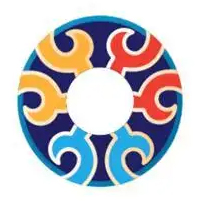Chinese Ancient Rare Craft: Cloisonné
01 Cloisonné: The great tool of the country, the treasure of the town
Cloisonné, formally known as "copper-wire inlay enamel" and commonly referred to as "Fahua" or "Qianfayou," is a type of art object created by applying enamel glazes onto a copper base with various patterns formed by bending and soldering fine copper wires.
During the reign of Emperor Jingtai in the Ming Dynasty, Cloisonné was widely popular, and its production techniques became more mature. The enamel glazes used in Cloisonné are often dominated by shades of blue, which is why it is called "Jingtai Blue" or "Jingtai Cloisonné."
02 Auction Boutique: A box of cloisonné imperial kiln ware
Cloisonné is a precious material and a difficult craft artwork. It is the only category of objects that is not shared by officials and civilians, and it is only used by emperors. In most cases, it is collected in the Palace Museum. In the 1.86 million heavy objects in the Palace Museum, there are only more than 6,000 cloisonné items, which shows its preciousness and rarity.
Without the collection of cloisonné, it is like having collected everything but gained nothing.
03 Treasured ornaments: Fragrant and colorful with ancient charm
In addition to making bottles, plates, bowls, stoves, round boxes, incense burners, and tripods, cloisonné also includes items such as flower pots, basins, charcoal pots, lamps, wax holders, flasks, and pots.
04 Production process: Exquisite craftsmanship, extremely gorgeous
The production process of cloisonné can be roughly divided into seven processes: making the base, wire inlaying, soldering, dotting blue, firing blue, polishing, and gilding. Each process has many details.
The glazes used in cloisonné come from natural minerals such as agate, lapis lazuli, and turquoise. Some of these rare glazes sell for tens of thousands of yuan per liter. These natural pigments are not easy to fade and are conducive to the long-term preservation of objects.
The magic of dotting blue lies in the fact that the color is not indicated in the design pattern, and the specific hue is entirely determined by the dotting master. During the firing blue stage, multiple firings are performed until the glaze is consistent with the wire height. Finally, after acid washing, decontamination, and glossy treatment, the cloisonné is placed in gold plating solution to allow the gold to adhere to the metal base, protecting the object and increasing its brightness.
Cloisonné: not just exquisite objects
Cloisonné represents the wisdom and beauty of ancient and rare Chinese craftsmanship. It combines the magnificence of bronze ware, the splendor of porcelain, and the refinement of painting skills. As a former court art, Cloisonné has now become part of intangible cultural heritage.

